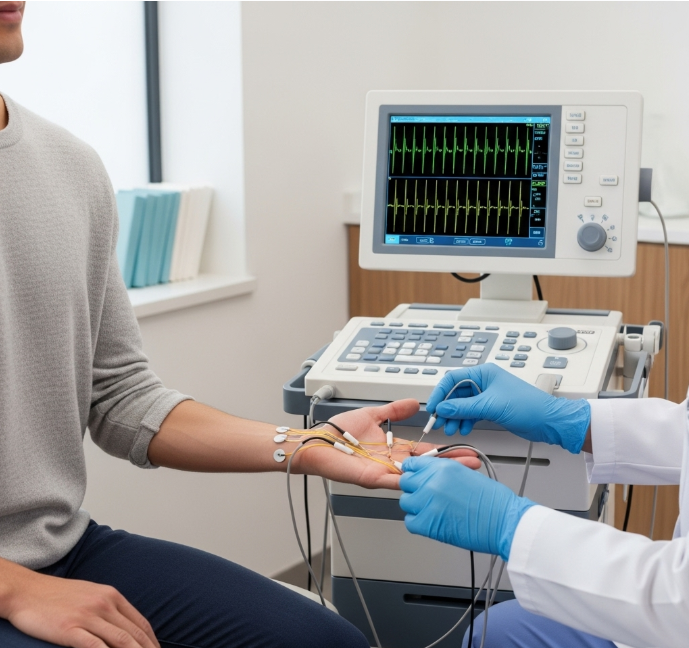Are you experiencing the frustrating symptoms of carpal tunnel syndrome (CTS)? The constant tingling, numb-
ness, and pain in your hand can significantly impact your daily life, making simple tasks like typing, gripping
objects, or even getting a good night's sleep a challenge. This blog post explores how Electromyography (EMG)
empowers physiotherapists to tailor effective carpal tunnel treatment plans, improving patient outcomes and
quality of life.
Understanding EMG: A Key Tool for Carpal Tunnel Assessment
Electromyography is a diagnostic procedure that assesses the health of muscles and the motor neurons that
control them. It involves inserting small needles into specific muscles to measure their electrical activity, both
at rest and during contraction. This test helps determine if muscles are functioning correctly and if the nerves
that supply them are healthy. Often used in conjunction with a nerve conduction study to provide a comprehensive
assessment, EMG is a valuable tool.
In the context of carpal tunnel syndrome, EMG is invaluable. It helps to identify and evaluate the median
nerve, which is compressed within the carpal tunnel of the wrist. By measuring the nerve's electrical activity,
physiotherapists can pinpoint the location and severity of the compression, providing essential information for
accurate diagnosis and treatment planning. This accurate diagnosis is crucial for developing an effective treatment
plan.
EMG in Diagnosing Carpal Tunnel Syndrome: Pinpointing Nerve
Compression
During an EMG, we assess how well your median nerve is working. Reduced activity tells us if the nerve is
compressed. The primary role of EMG in CTS is to confirm the diagnosis and rule out other conditions that may
mimic its symptoms. CTS occurs when the median nerve, which runs from the forearm into the hand, becomes
compressed at the wrist. This compression can lead to pain, numbness, tingling, and weakness in the hand and
fingers.
The symptoms of carpal tunnel syndrome often include pain, numbness, and tingling in the thumb, index,
middle, and part of the ring finger. These symptoms may worsen at night. EMG helps differentiate CTS from
other conditions, such as cervical radiculopathy (nerve compression in the neck) or thoracic outlet syndrome
(compression of nerves and blood vessels in the space between your collarbone and first rib), which is crucial
for appropriate physiotherapy management.
EMG Results: Guiding Personalized Carpal Tunnel Treatment
Plans
Based on the EMG findings, our physiotherapists design a personalized program that targets your specific needs.
This may include manual therapy to release tension, exercises to improve nerve gliding, and ergonomic advice to
protect your wrist. EMG results directly influence the physiotherapy treatment plan for carpal tunnel syndrome. For
patients with mild to moderate CTS, physiotherapy interventions may focus on reducing inflammation, improving
nerve gliding, and strengthening the muscles around the wrist and hand.
Carpal tunnel exercises designed to improve range of motion and reduce nerve compression are often prescribed.
Specific examples include nerve gliding exercises, tendon gliding exercises, and strengthening exercises.
Additionally, patient education regarding activity modification and ergonomic principles is a crucial part of the
physiotherapy plan.
Conclusion
Don't let carpal tunnel pain control your life. Electromyography (EMG) is an indispensable tool in the diagnosis
and management of carpal tunnel syndrome. It provides objective data that helps physiotherapists accurately
diagnose CTS, determine its severity, and personalize physiotherapy interventions. By monitoring treatment
effectiveness and adjusting interventions as needed, EMG ensures that patients receive the most appropriate
and effective care. Early diagnosis and tailored treatment, facilitated by EMG and nerve conduction studies, are essential for optimal
outcomes.
